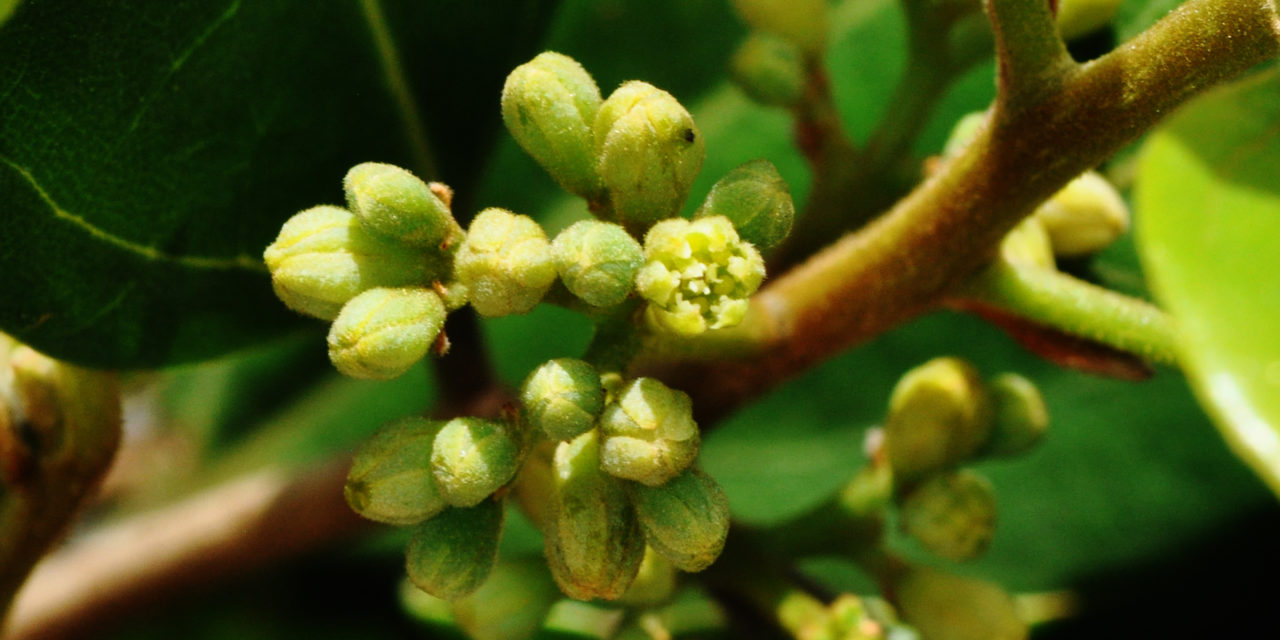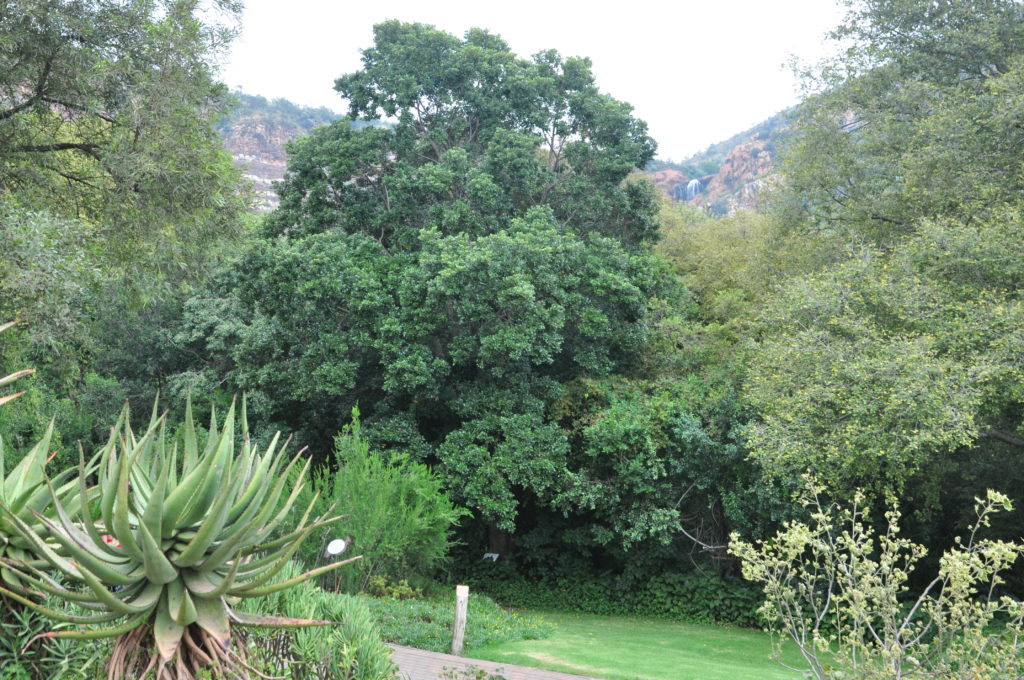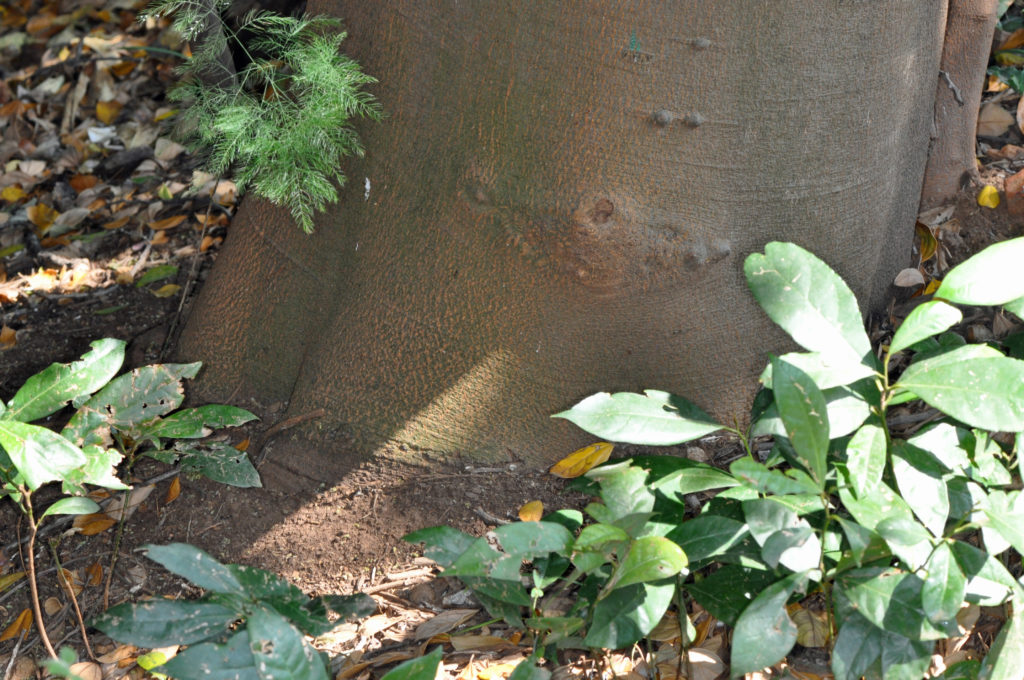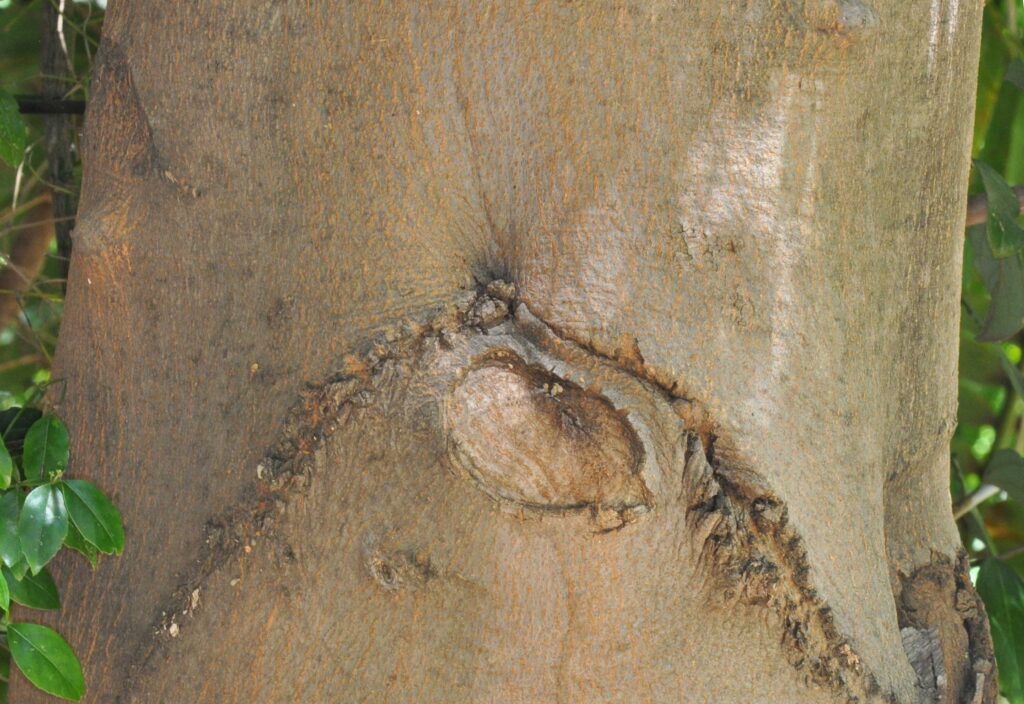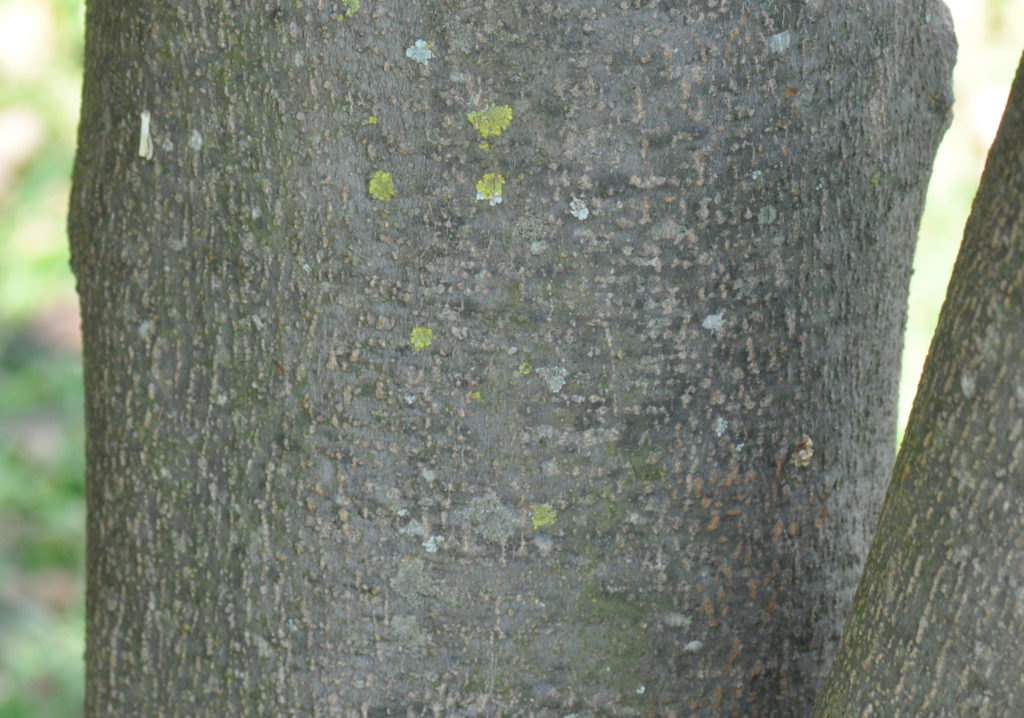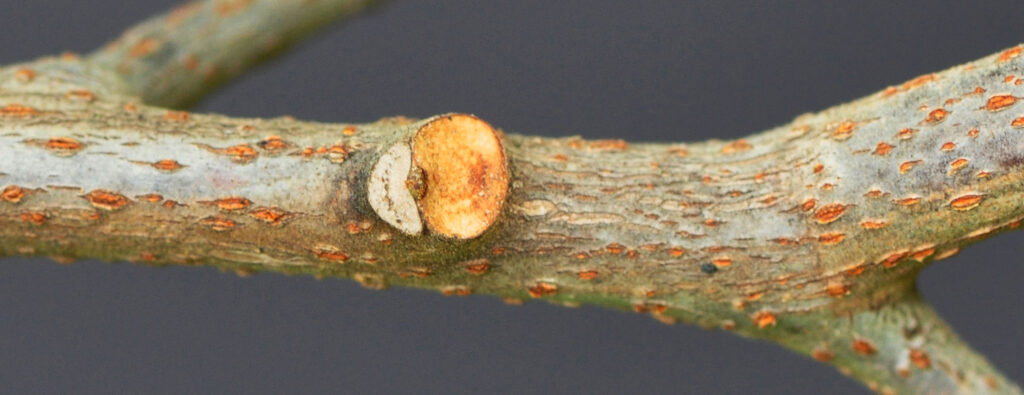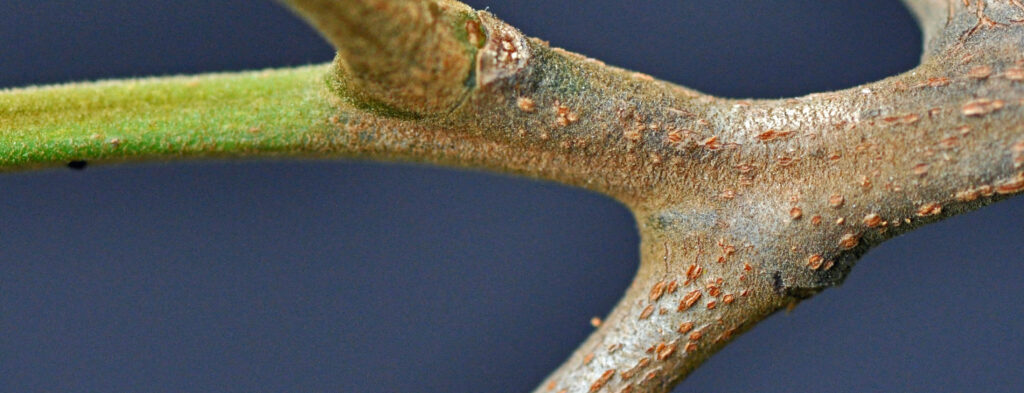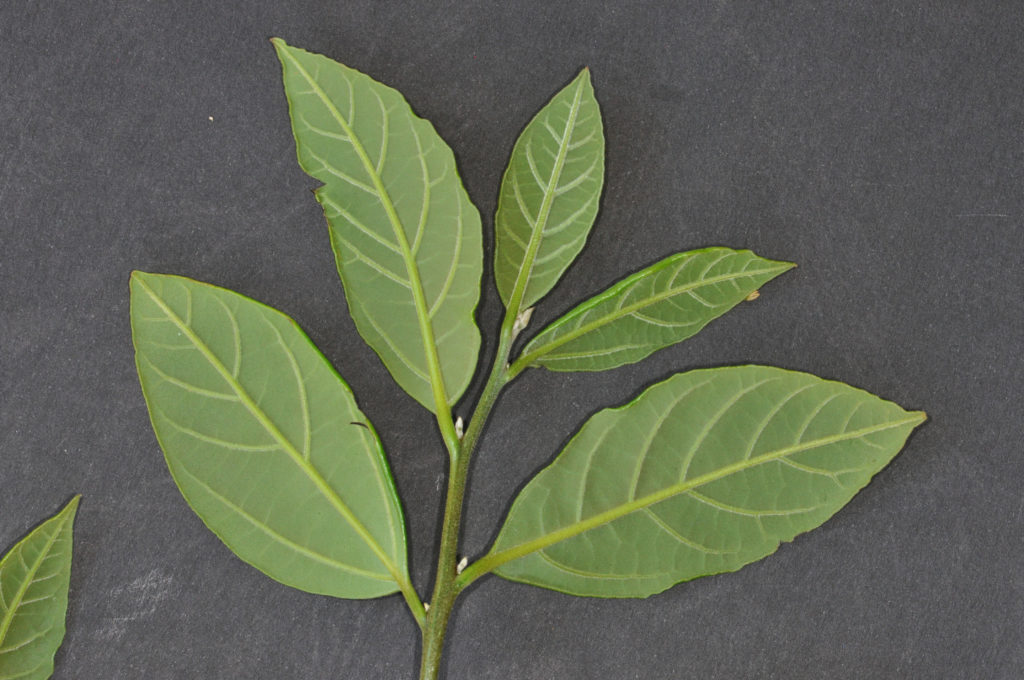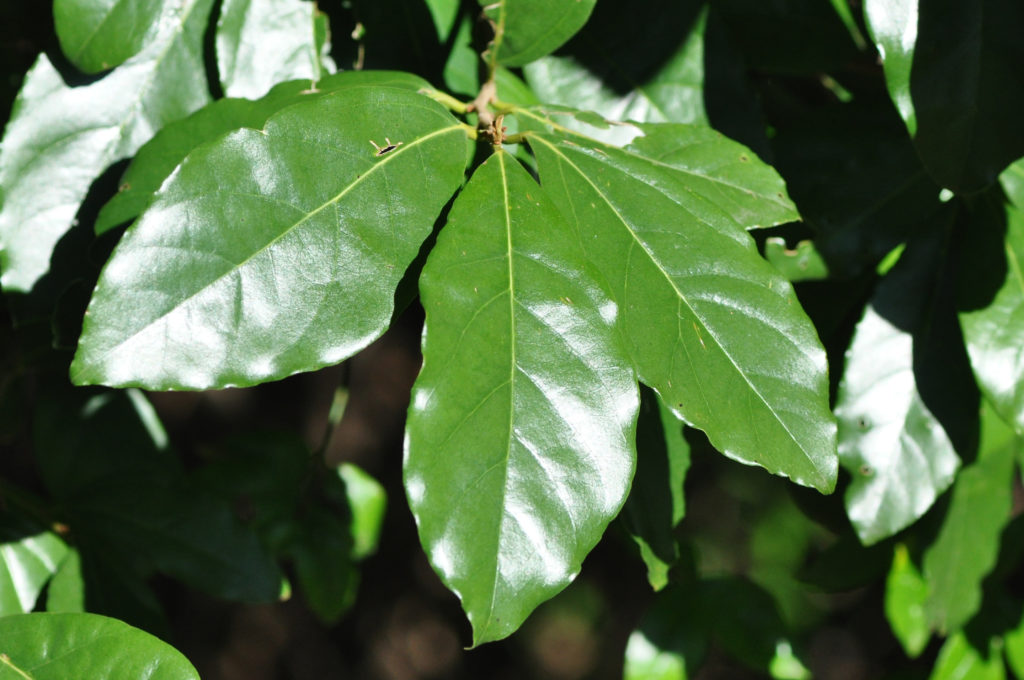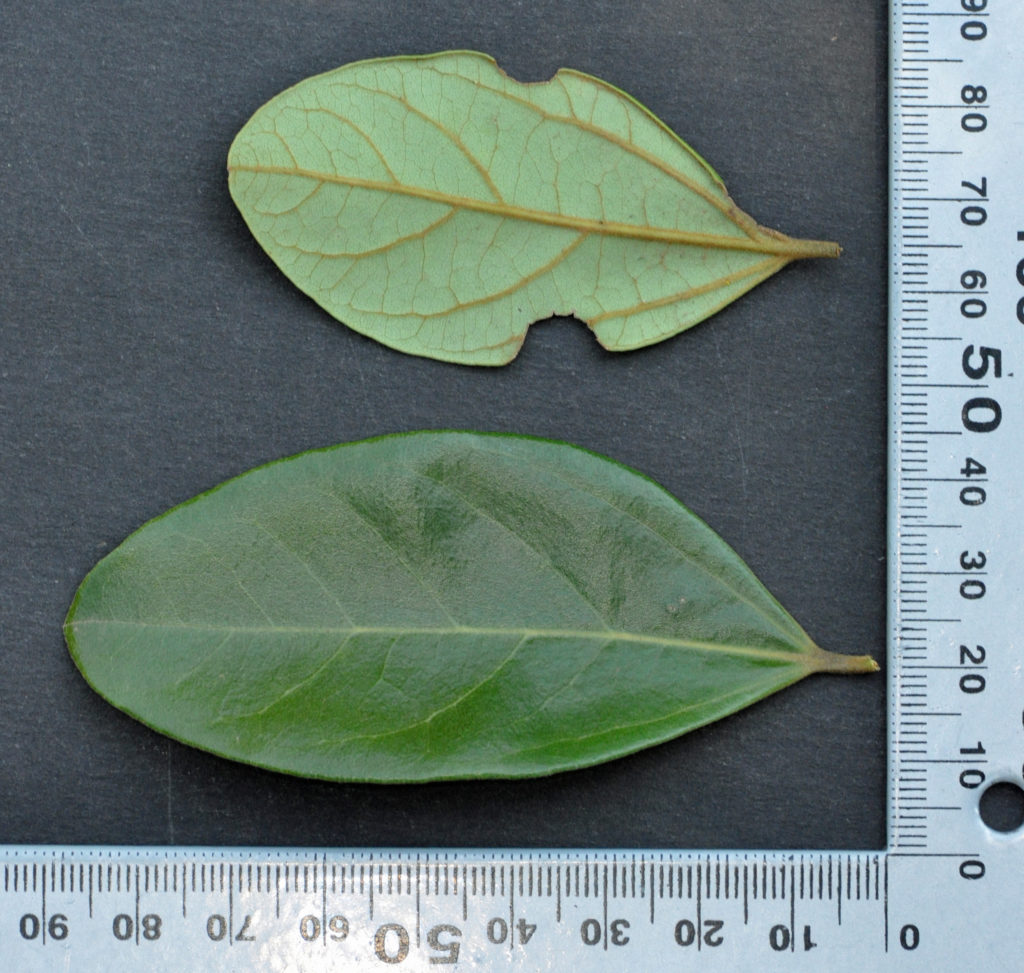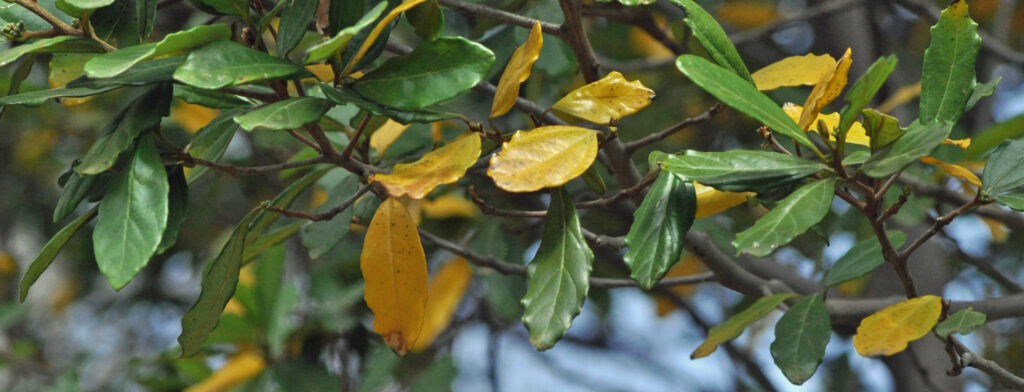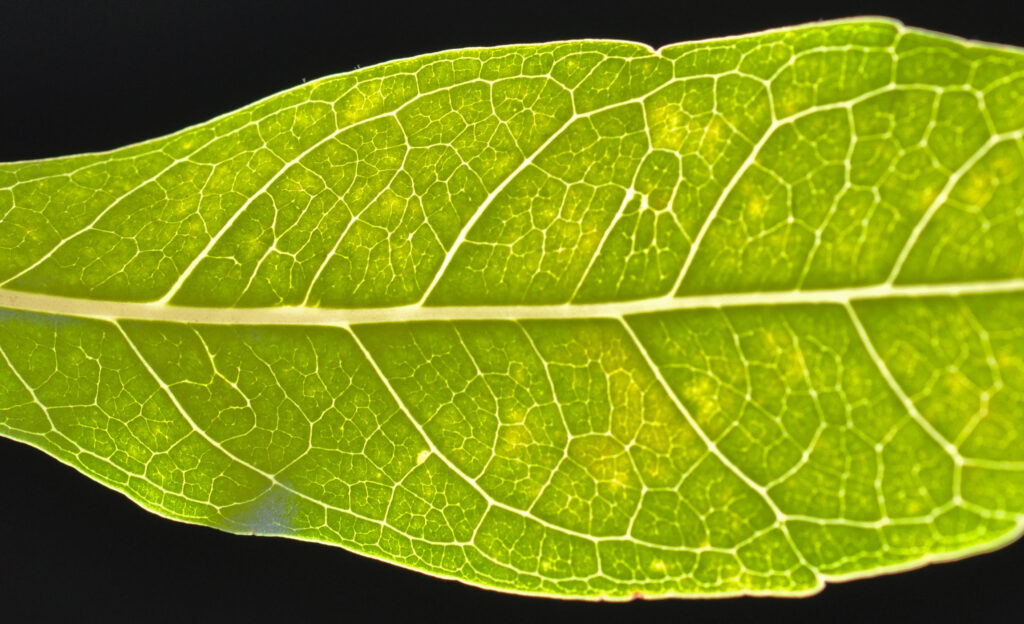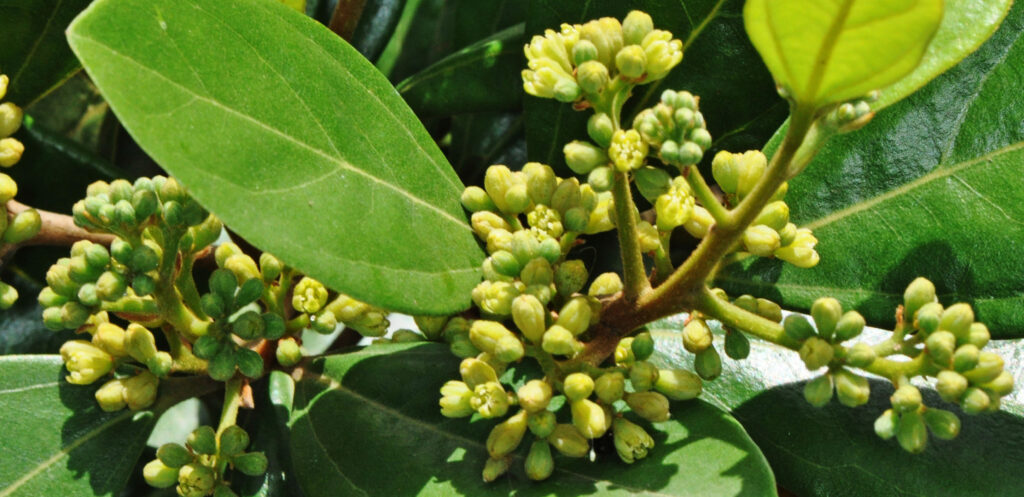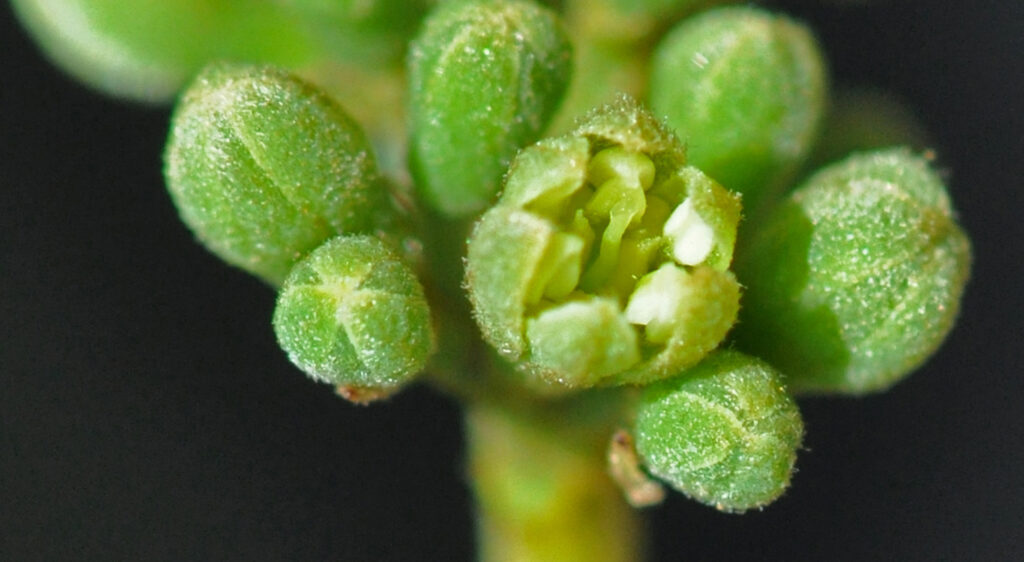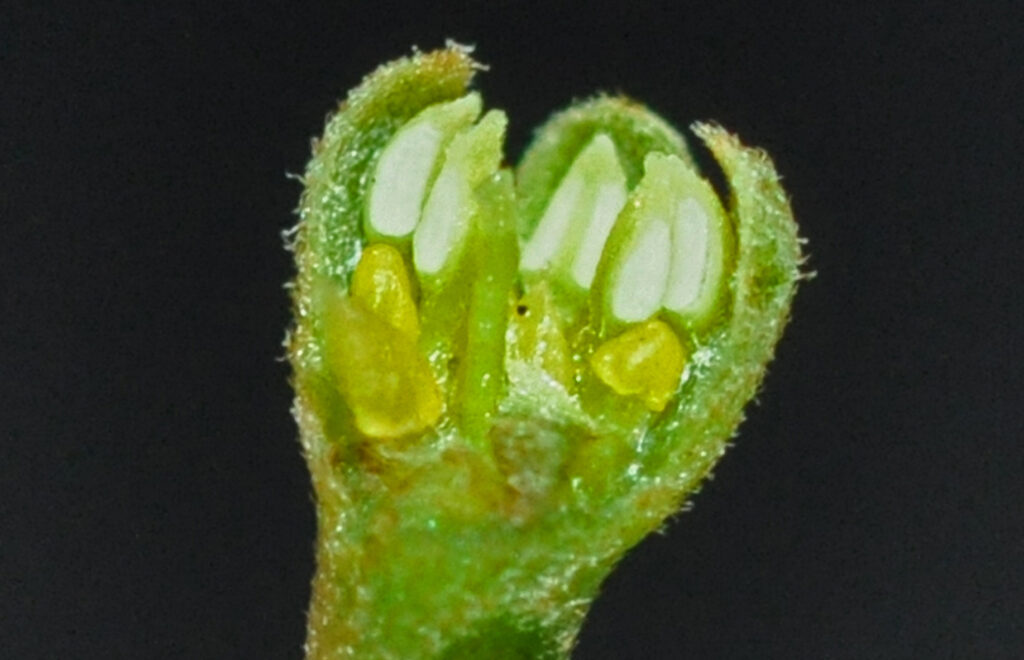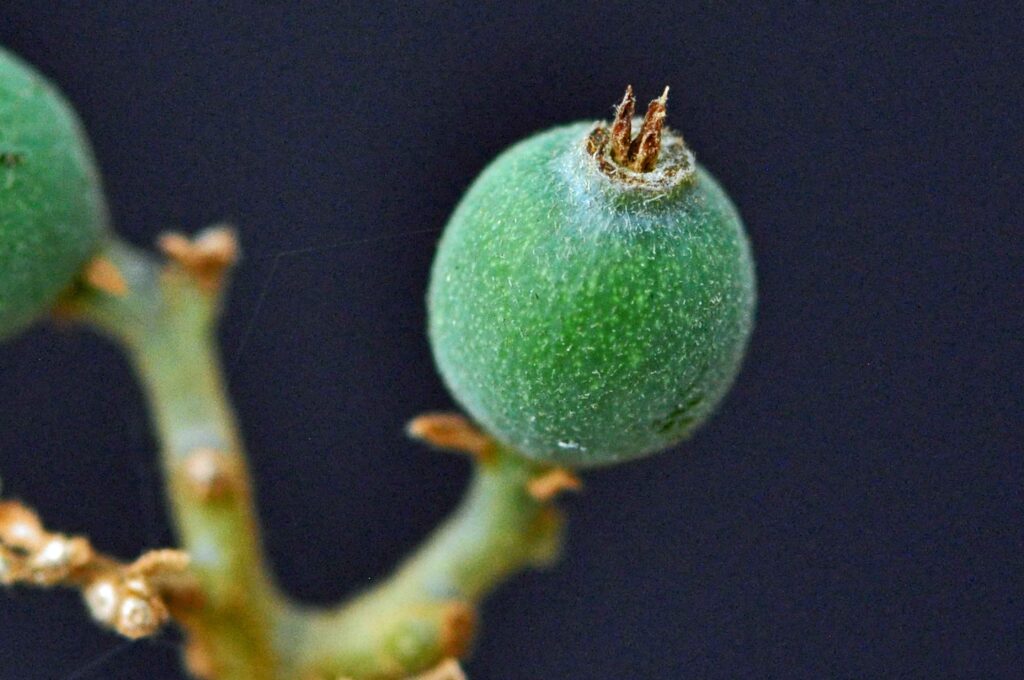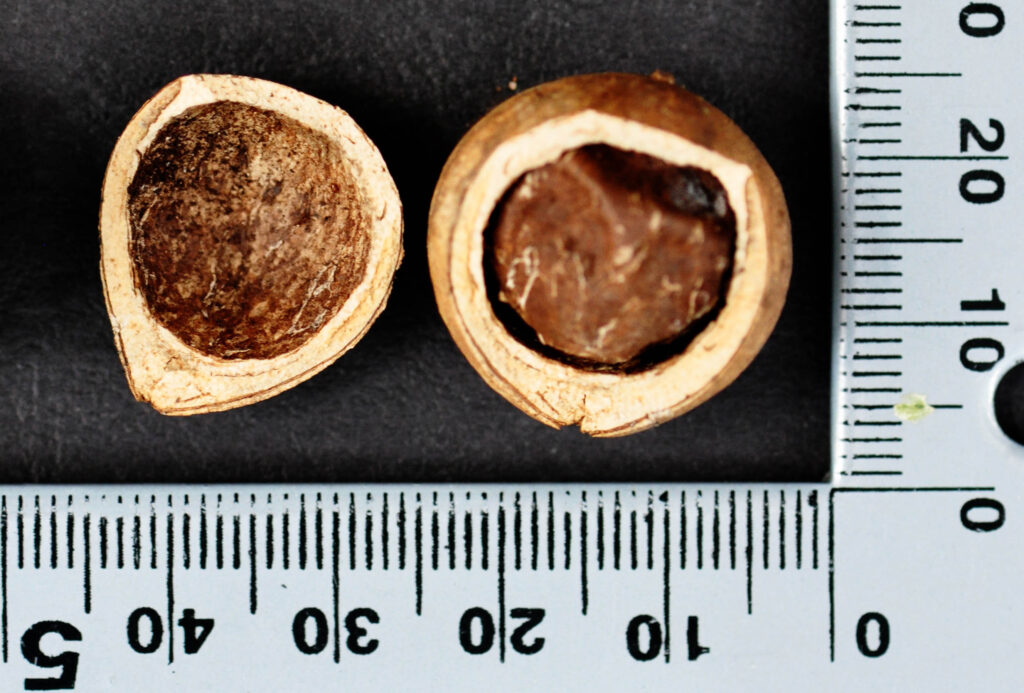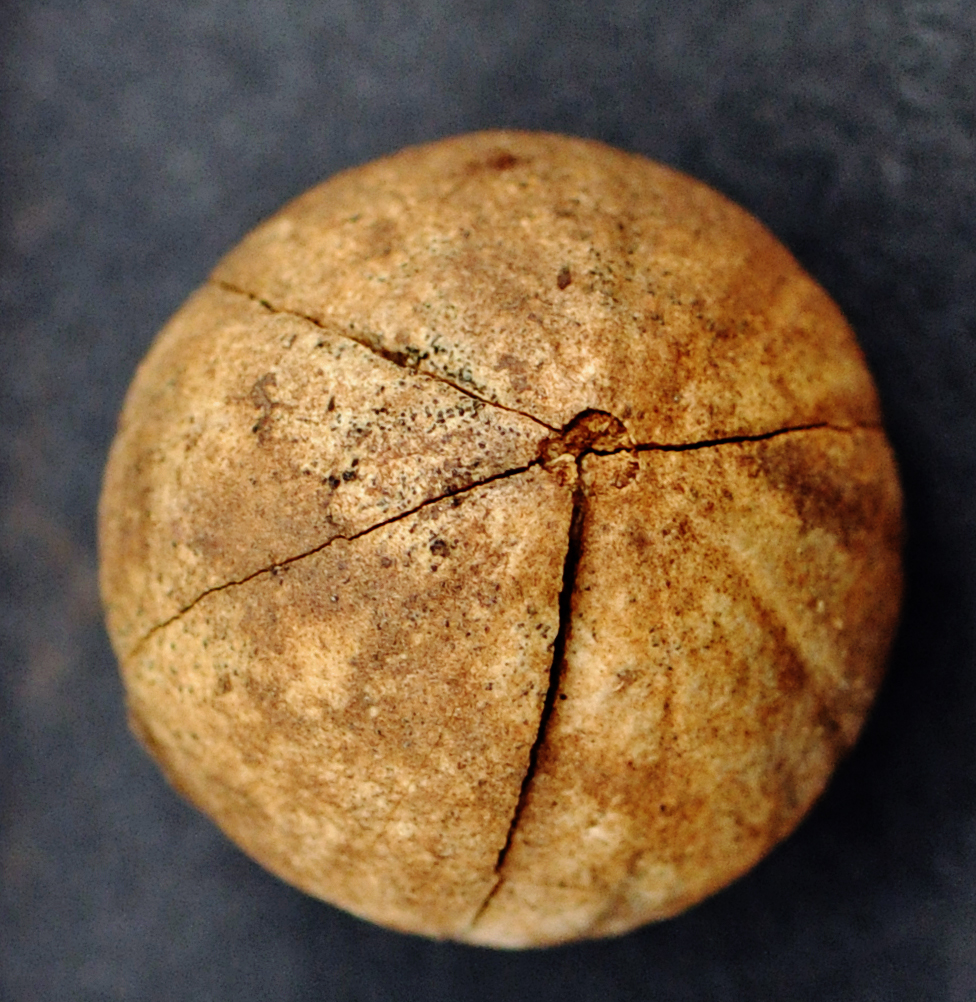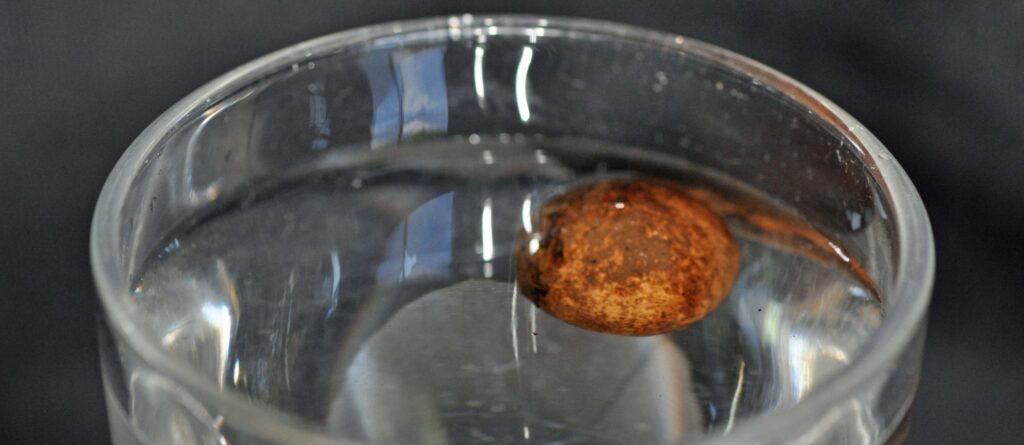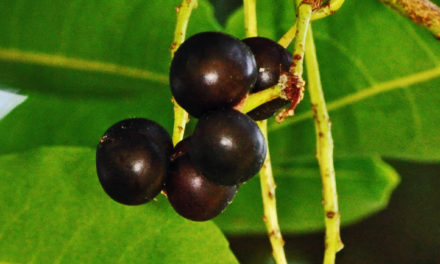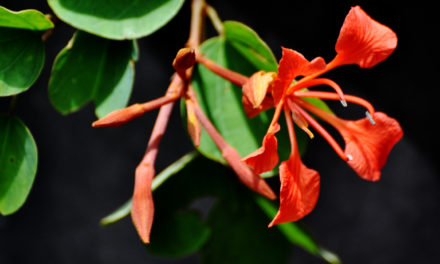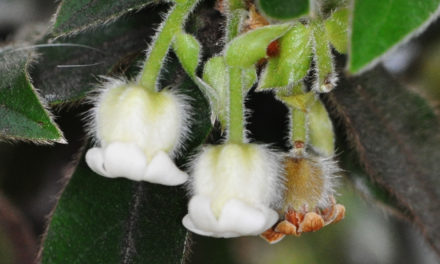General Info – summary
This evergreen Tree is up to 16+m high. The simple alternate, leathery Leaves are ovate, oblong or elliptic and lack stipules. The greenish white Flowers are small, bisexual and regular. The tepals are in 2 rows of 3 each and 9 stamens are present. The sessile, superior, 1 chambered ovary has a short style. The Fruit is a drupe with an accrescent receptacle surrounding the almost spherical seeds. Aromatic glands are present.
Description
SA Tree No. 113.
Common names: (Afr) Baster-stinkhout, Basterswartstinkhout, Basterswartysterhout, Breëblaarkweper, Breëblaar-kweper, Pondo-kweper, Wildekweper. (Eng) Bastard Stinkwood, Broad-leaved Laurel, Broad-leaved Quince, Broad-leaved Wild-quince, Wild Quince. (isiXhosa) Umgxobothi, Umgxaleba, Umthongwane, Umthungwa, Umncatyana. (isiZulu) Umdlangwenya, Umhlangwenya, Umkhondweni, Umthungwa.
Family Lauraceae: (Laurel and avocado family) has in excess of 2 500 species in about 42 Genera. Species variation is substantial. They fit in the dicotyledonous group (with 2 embryotic leaves/cotyledons). The Lauraceae has 5 genera and 8 or 9 indigenous species in South Africa. Most are evergreen trees. The 3 indigenous tree genera are Cryptocarya, Dahlgrenodendron and Ocotea. These trees may be buttressed. The alternate or opposite Leaves are simple and usually leathery, aromatic and coriaceous. Stipules are absent. The small, green or yellow, unisexual, bisexual or mixed Flowers are actinomorphic. The Perianth is not differentiated into sepals and petals and is usually 3-merous with equal, free Tepals in 2 rows. Staminodes and Stamens occur in 3-4 whorls. The Anthers are basifixed and their 2-4 theca open by valves. Fruit are drupes with thin endocarps. Seeds lack endosperm and have relatively large, fleshy cotyledons.
Name derivation: Cryptocarya – hidden nut: a hard receptacle encloses the fruit. latifolia – broad leaves. There are 7 species of this genus in southern Africa.
Conservation: National Status: L C (Least Concern). 2016 Assessors: V.L. Williams, D. Raimondo, N.R. Crouch, A.B. Cunningham, C.R. Scott-Shaw, M. Lötter and A.M. Ngwenya. However, the population is decreasing and will need monitoring.
Tree
Aromatic glands are present in all parts of this attractive Tree. It has a more or less rounded or spreading crown and is usually up to 17m high. It may also be a shrub. The grey-brown to light brown Bark is rather smooth with fine longitudinal fissures and occasional horizontal ridges. The diameter of the Trunk is up to 1m and may be buttressed (photo 882). The Branches are seamed crosswise. Leaf Scars (photo 263) and orange Lenticels (usually raised corky oval or elongated area on the plant that allows the uncontrolled interchange of gases with the environment) are visible on the youngish branches (photos 269 & 263). Yellowish brown hairs cover the young branches (photo 269). White hairs cover the young parts, and the tree is able to coppice (produce new growth from the stump or roots) readily.
- 1034. 2018/03/07. Walter Sisulu NBG. Photo: David Becking.
- 882. 2016/09/06. Walter Sisulu NBG. Photo: David Becking.
- 90. 2014/09/30. Walter Sisulu NBG. Photo: David Becking.
- 93. 2014/09/23. Walter Sisulu NBG. Photo: David Becking.
- 263. 2018/01/11. Walter Sisulu NBG. Photo: David Becking.
- 269. 2018/01/11. Walter Sisulu NBG. Photo: David Becking.
Leaves
This evergreen tree has alternate Leaves (photo 94) that are Simple (have a single blade that may have incisions that are not deep enough to divide the blade into leaflets). They are broadly oval, ovate, oblong or elliptic, and each coriaceous (leathery) leaf (photo 607) is up to 10 x 4cm. The upper surfaces of young leaves are velvety (having a smooth, soft appearance, feel, or taste). Coppice (when stems are cut or burned it causes regrowth from the stump or roots) leaves are larger than mature leaves. The glossy Upper surface (photo 607) of mature leaves is dark green and the Midrib is slightly sunken (especially towards the apex (photo 105). The Lower surface (photo 94) is lighter and greenish with a slightly blue-brown tinge and the veins are yellowish. Internal leaf details are easiest to see when viewed against a strong light (photo 172). Here the midrib and most Veins are clearly visible. Leaves are usually 3-veined near, but usually not at the base (photo 609) and there are 4-6 pairs of lateral veins (photo 94). The lateral veins closest to the base are clearly the longest (photo 607). The Apex, which may form a drip-tip, is broadly tapering, notched, pointed or round. The Base is broadly tapering or rounded (photo 607). The rolled under, wavy Margin (photo 267) is usually entire (with a continuous margin, not in any way indented) but may be slightly toothed. The Petiole (leaf stalk) is up to 1,2cm long, and usually hairy. Stipules (basal appendages of the petiole) are absent. Older leaves turn yellow (photo 389).
- 94. 2014/09/30. Walter Sisulu NBG. Photo: David Becking.
- 105. 2014/06/03. Walter Sisulu NBG. Photo: David Becking.
- 607. 2015/04/14. Walter Sisulu NBG. Photo: David Becking.
- 267. 2018/01/11. Walter Sisulu NBG. Photo: David Becking.
- 389. 2016/08.16. Walter Sisulu NBG. Photo: David Becking.
- 172. 2015/08/25. Walter Sisulu NBG. Photo: David Becking.
Flowers
The small, bisexual Flowers are actinomorphic (Regular, symmetrical. Flowers are vertically divisible into similar halves by more than 1 plane passing through the axis). Flowers are borne in leaf axils (the upper angle between a lateral organ, such as a leaf, and the stem that bears it) in long slender panicles (indeterminate, branched inflorescence with stalked flowers – photo 291). The Perianth (the 2 floral envelopes considered together; a collective term for the calyx and corolla) tu0.be is ovoid. The greenish white to cream Tepals (parts of the perianth when these parts cannot easily be divided into calyx and corolla) are in 2 whorls of 3 each (photo 512). In this photo, they are similar, sub-equal and externally hairy. The tepals are deciduous (falling off at maturity). The process is abscission (the natural detachment of parts of a plant, typically dead leaves and ripe fruit). Buds are green (photo 512) and Pedicel (flower stalk) may both be hairy. The 9 fertile Stamens are in 3 whorls and are attached to the perianth. The stamens have Anthers that are introrse (turned or faced inward or toward the axis as in an anther whose line of dehiscence faces towards the centre of the flower). Anthers are longer than the filaments (photo 514) and each has 2 thecae (pollen sacs). In addition, there is an innermost 4th whorl containing conspicuous staminodes (sterile stamens) which may be shaped like arrowheads. There is a single Pistil (a unit of the Gynoecium, the female element of the flower, composed of the Ovary, Style and Stigma). The sessile, superior 1-chambered Ovary contains a single, short cylindrical Style (the more or less elongated part of the pistil situated between the ovary and the stigma) and a slightly expanded Stigma (the part of the pistil that receives the pollen (photo 514). (Sep-Nov).
- 291. 2015/09/15. Walter Sisulu NBG. Photo: David Becking.
- 512. 2019/09/04. Walter Sisulu NBG. Photo: David Becking.
- 514. 2019/09/04. Walter Sisulu NBG. Photo: David Becking. Dissected.
Fruit
The young Fruit is a green (photo 333) Drupe. When mature it becomes brown, nearly spherical and about 2cm in diameter (photo 312). The drupe is a fleshy, 1-seeded indehiscent fruit with the seed enclosed in a stony endocarp (photo 311); stone fruit e.g., peach. The fruit is completely enclosed within a hard accrescent (continues to grow after flowering) receptacle (that expanded tip of the flower stalk from which the floral parts develop – photo 312). It is initially light green but turns dark brown to black after falling (photo 312). At this stage, it has a low density, and can float in water (photo 104). The almost spherical Seed lacks endosperm (the starch and oil-containing tissue of many seeds; often referred to as the albumen). The Testa (seed coat) is membranous. (Jan-Mar).
- 333. 2019/10/22. Walter Sisulu NBG. Photo: David Becking.
- 311. 2015/02/24. Walter Sisulu NBG. Photo: David Becking.
- 312. 2015/02/24. Walter Sisulu NBG. Photo: David Becking.
- 104. 2017/03/28. Walter Sisulu NBG. Photo: David Becking.
Distribution & Ecology
This tree is Endemic (endemism is the ecological state of a species being unique to a defined geographic location) in South Africa. It grows from Port St. Johns (Eastern Cape – 270km NE of East London) and the Pondoland Coastal Plateau to the northwest. From here trees occur northwards into KwaZulu-Natal – as far as Ifafa (Zulu – sparkling) Lagoon (south of Scottburgh – a coastal resort). Here good specimens are visible. Trees are common close to streams, rivers and evergreen forests – usually below 1 100m. This tree coppices (growth occurs from the trunk from shoots or root suckers) readily. Baboons and buck consume the Fruit that can float, and this becomes a method of seed dispersal. The picture of the floating fruit (photo 104 above) was in fresh water. Seawater has a greater density, and this further enhances dispersal. Leaves, fruit and bark contain antioxidants. The tree attracts insects, birds, and antelope.
Ethnobotany
This fast-growing tree tolerates mild frost. Although relatively high in proteins, carbohydrates and crude fibre, this fruit is not edible (for us) because the presence of toxic alkaloids. The Wood is white and soft. Local boys use Fruit shells as penis boxes. The plant tolerates mild frost. Local medicine makes use of this tree, but excessive bark harvesting for medicinal purposes is becoming a problem. However, this species has a fast population growth rate, and there is a good chance the wild populations will recover from exploitation.
References
Boon, R. 2010. Pooley’s Trees of eastern South Africa. Flora and Fauna Publications Trust, Durban.
Coates Palgrave, M. 2002. Keith Coates Palgrave Trees of Southern Africa. edn 3. Struik, Cape Town.
Lawrence, G. H. M, 1951. Taxonomy of Vascular Plants. The Macmillan Company, New York. Tenth Printing 1965.
Palmer, E. & Pitman, N. 1972. Trees of southern Africa. Balkema, Amsterdam, Cape Town.
van Wyk, B. & van Wyk, P. 1997 Field guide to Trees of Southern Africa, Struik, Cape Town.
Williams, V.L., Raimondo, D., Crouch, N.R., Cunningham, A.B., Scott-Shaw, C.R., Lötter, M. & Ngwenya, A.M. 2022. Cryptocarya latifolia Sond. National Assessment: Red List of South African Plants version . Accessed on 2024/08/26.
http://researchspace.ukzn.ac.za/xmlui/handle/10413/12294?show=full
https://www.cabdirect.org/cabdirect/abstract/19361400154
http://posa.sanbi.org/flora/browse.php?src=SP
http://www.ipni.org and http://apps.kew.org/wcsp/
https://en.wikipedia.org/
https://www.britannica.com/

